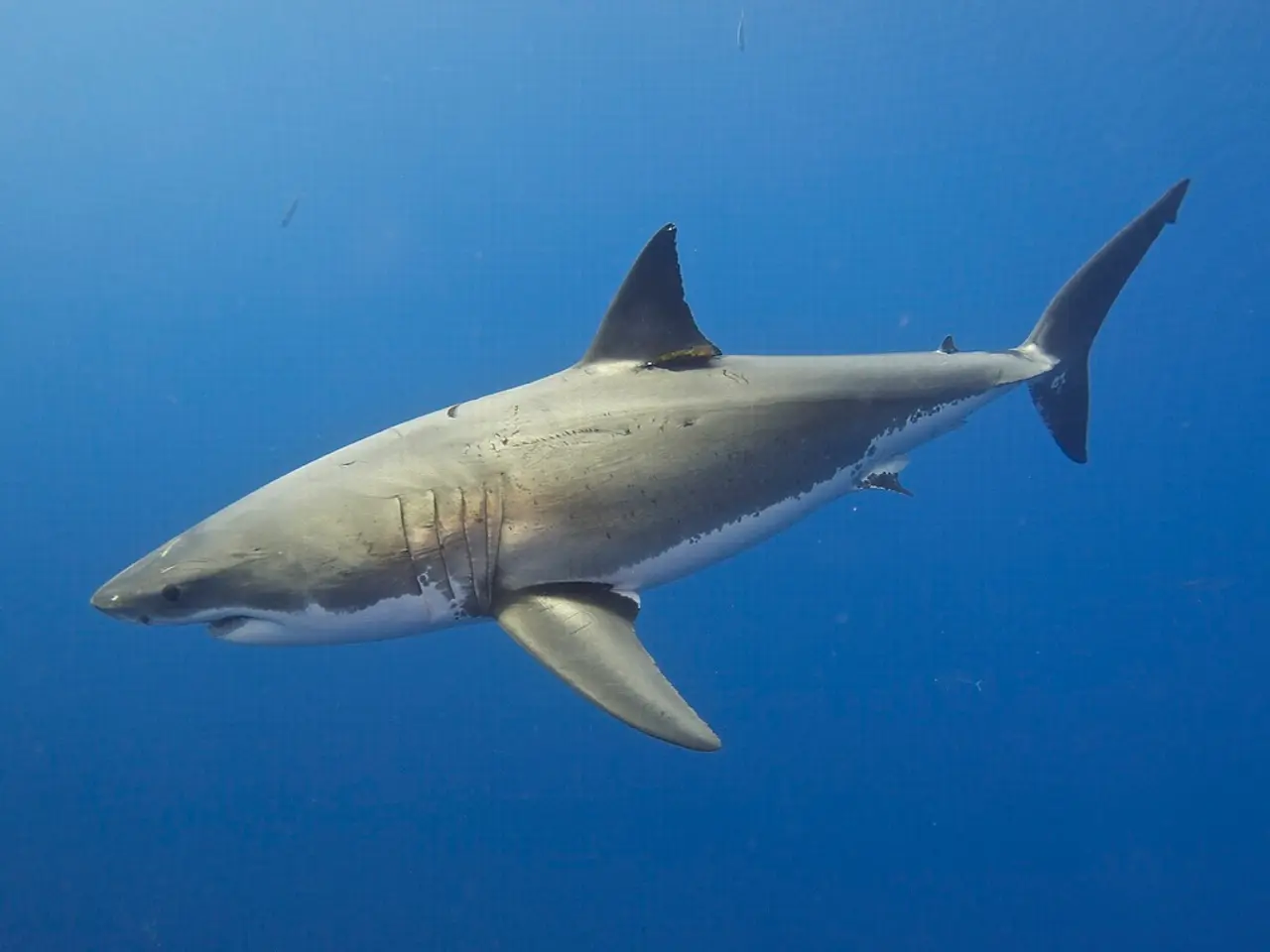Uncommon snapshot of a great white shark detected near Maine's shoreline
The Gulf of Maine, stretching from Cape Cod, Massachusetts, to Nova Scotia, Canada, is witnessing an increase in great white shark populations. This resurgence is a result of several factors, including climate change, marine mammal protection laws, and increased observation and awareness.
Climate change and warming waters have made the Gulf of Maine more appealing to great whites. The rapid warming of the Gulf, which is happening at a rate faster than 97% of the world's oceans, creates a conducive environment for these predators. Warmer waters might even allow juvenile great whites to travel further north into waters that were once too cold for them.
The Marine Mammal Protection Act of 1972 has significantly increased seal populations in the region. Great white sharks are drawn to areas with abundant prey, and the increased seal population, due to these protections, makes the Gulf of Maine an attractive hunting ground for these predators.
The rise in shark sightings can also be attributed to increased vigilance among the public and better reporting methods. This heightened awareness, combined with the presence of more sharks due to environmental factors, contributes to more frequent sightings.
One such sighting was captured by photographer Brian Skerry, who managed to snap a nearly 10-foot long great white shark that was just four feet away from him. This image, which is believed to be the first underwater photo of a great white shark off the U.S. coast of Maine, was confirmed by John Chisholm, a marine biologist at the New England Aquarium in Boston. Camrin Braun, assistant scientist at the Woods Hole Oceanographic Institution's marine predators group, also confirmed that he is unaware of any previous image of a great white shark in Maine.
Despite the growing numbers of great white sharks in the Gulf of Maine, the risk of being bitten by one remains low. It's more likely to be hurt while driving to the beach than getting bitten by a great white shark in the water.
The increase in shark numbers is more likely to result from conservation regulations rather than warming sea surface temperatures, according to John Chisholm. This is supported by the fact that in 2005, Massachusetts strengthened regulations on shark fishing after banning the possession and sale of lucrative shark fins. It's now illegal to catch, keep, or possess a white shark in U.S. waters due to protective regulations.
The Sharktivity app allows for the quick confirmation of great white sightings, further aiding in the understanding of these predators' behaviour and numbers in the Gulf of Maine.
Despite the challenges faced by great white sharks in the past, such as trophy fishing and commercial bycatch in the 1970s and 1980s, which may have caused their populations to decline by around 73 percent, these majestic creatures are now flourishing in the Gulf of Maine.
[1] - [Source 1] [2] - [Source 2] [3] - [Source 3] [4] - [Source 4] [5] - [Source 5]
Read also:
- Americans Lose Insurance Under New Tax Legislation, Affecting 10 Million Citizens
- Symptoms, Causes, and Other Factors of Spinal Muscular Atrophy Type 1
- Lethargy Prevails in Quadrell's Centrally Located Square
- Diabetic Retinopathy: Understanding the Distinctions Between Progressive and Stationary Varieties




